
Rainwater Harvesting: A Garden Lover’s Guide to Sustainability

Imagine you are wandering through your garden after a refreshing rain, marveling at how every droplet revitalizes the soil, giving life to every leaf, petal, and plant in sight. What if you could capture this essence, this life-giving nectar from Ranginui, to nurture your garden even in drier times?
That’s where rainwater harvesting comes in—a practice as ancient as it is beneficial, not just for your garden, but for our planet. Let’s dive into why harvesting rainwater is something every garden enthusiast should consider.
Why Harvest Rainwater?
Environmental Benefits
Harvesting rainwater reduces demand on municipal water supplies, lessening the strain on these systems and reducing energy consumption associated with water treatment and distribution. In New Zealand, where water scarcity can be an issue in certain regions and restrictions are put in place regularly, capturing rainwater for garden use makes ecological, practical and communal sense.
Economic Savings
Utilizing rainwater for irrigation can significantly reduce water bills. Gardens and lawns can consume a considerable amount of water, especially during the dry summer months in many parts of New Zealand. In a separate post, we can explore another form of water utilization in the form of slope and swale design.
Water Quality and Plant Health
Rainwater is free from many of the chemicals and minerals found in tap water that can adversely affect soil health and plant growth. Using rainwater for irrigation can lead to healthier, more vibrant gardens.
Mātauranga Māori

Māori knowledge, or Mātauranga, offers insights into sustainable living and environmental stewardship. Principles such as kaitiakitanga (guardianship and protection of the environment) and rahui (restriction) teach the importance of conserving resources and respecting natural cycles. In the context of rainwater harvesting, these principles remind us of the value of water as a taonga (treasure) and the importance of using it wisely and respectfully.
Learn about water saving tips from Smart Water NZ.
Did you know?
In 2017, New Zealand passed a groundbreaking law granting personhood status to the Whanganui River. The law declares that the river is a living whole, from the mountains to the sea, incorporating all its physical and metaphysical elements.
The Downsides and How to Mitigate Them
While rainwater harvesting is highly beneficial, there are a few potential drawbacks, such as the initial cost of setting up a system and the risk of contamination. However, these can be mitigated through proper system design and maintenance, ensuring your harvested rainwater remains clean and safe for garden use.
DIY Rainwater Harvesting
Here’s a simple guide to setting up a basic rainwater harvesting system:
- Choose Your Catchment Area: Typically, this will be your roof. The larger the catchment area, the more water you can collect.
- Install Gutters and Downspouts: If you haven’t already, ensure that your roof is equipped with gutters and downspouts to direct water into your collection system.
- Set Up a Collection Barrel: Place a large opaque barrel or water tank at the end of a downspout. Consider installing a first-flush diverter to prevent the initial runoff, which may contain debris and contaminants, from entering your storage container.
- Use a Filter: Install a filter between your downspout and the collection barrel to remove debris. A mesh over gutters prevents debris from entering gutters.
- Maintain Your System: Regularly check and clean your gutters, downspouts, and filters to ensure your system is running smoothly.
A Harvest system I’m currently testing and setting up
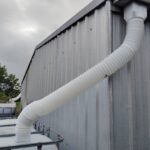
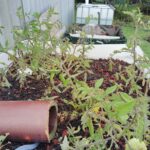
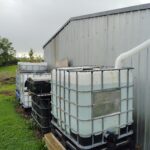
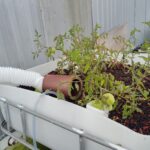
I purchased two IBC food-grade tanks for $100 each and ordered drainpipe extensions to attach directly to my gutter outlets ($15 each). This was much cheaper, quicker and easier to install than pipe elbows, glued joints, etc. I still need to purchase some tank covers to keep light from exposing the tanks and prevent algae. Two of the tanks have had the tops cut off, turned upside down, and filled with sand and gravel. This will be for watercress, but other plants will grow in there quite happily. These tanks use a small 12V submersible pump to circulate the water from the top section to the bottom. I’ll need to get a bigger pump now that I’ve expanded from one to 4 tanks. I have some goldfish in one of the tanks with some oxygen weed, but as the watercress grows it should filter the water more efficiently.
Summary
Rainwater harvesting is a practice rich in benefits, offering economic savings, environmental conservation, and alignment with sustainability principles. By collecting and using rainwater, gardeners can enjoy healthier plants, contribute to water conservation efforts, and engage with a tradition that respects and protects our natural resources.
Call to Action
Why not give rainwater harvesting a try in your garden? Not only will you be helping your community, but your garden will thrive with the natural, soft water from the skies. For those ready to take the next step, consider exploring more advanced rainwater harvesting systems and products designed to make collection and usage even more efficient. Happy gardening, and let’s make every drop count!
Product Endorsement:
Hyundai Submersible Drainage Clean Water Pump 250W
If you live in New Zealand, you will probably know about Trade Tested. This link is to a submersible pump product I have sourced that is suitable for tank circulation and has multiple excellent reviews. This is what I’m looking to purchase as my water volume increases.
References
- Ministry for the Environment, NZ. “Water Conservation and Efficiency.
- Te Ara – The Encyclopedia of New Zealand. “Māori and the Environment: Kaitiakitanga.”
- Landcare Research New Zealand Ltd. “Using Rainwater Harvesting for Gardens.”



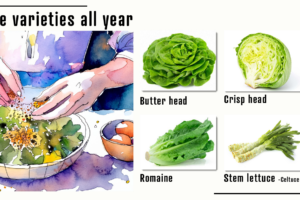

4 Comments
I do not even know how I ended up here, but I thought this post was good.
I don’t know who you are but certainly you are going to a famous blogger if you are not already 😉 Cheers!
Very quickly this web site will be famous among all blogging people, due
to it’s fastidious posts
Hey There. I discovered your blog using msn. This is a very well written article.
I will make sure to bookmark it and come back
to read more of your useful information. Thank you for the post.
I will certainly return.
Hi there, I found your site by the use of Google whilst looking for a similar topic, your
web site got here up, it seems to be great. I’ve bookmarked it in my google bookmarks.
Hello there, simply become aware of your weblog via Google, and found that it’s really informative.
I’m gonna be careful for brussels. I’ll appreciate in case you continue this in future.
A lot of people will probably be benefited from your writing.
Cheers!